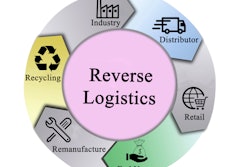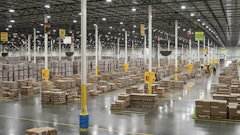
Retailers have spent so much time optimizing outbound logistics that they’ve neglected the complexities of returns, leading to inefficiencies, rising costs, and frustrated customers. That’s no longer a viable strategy. According to the National Retail Federation and Happy Returns, consumers returned $890 billion in products last year, almost 17% of total sales.
At the same time, the financial burden of reverse logistics is growing beyond the sheer volume of goods consumers don’t want to keep.
Returns have always been a challenge for retailers, but rising shipping costs, fraud, and operational inefficiencies are making them more expensive than ever. Meanwhile, return fraud continues to rise, turning some return policies into financial liabilities rather than customer perks.
The returns process has become just as important as the last mile, and coming up short can come at the cost of customer loyalty. The Reverse Logistics Association reports that 84% of consumers said a positive returns experience encourages them to shop with a retailer again.
Instead of treating reverse logistics as an unavoidable cost, businesses should integrate it into a broader strategy that prioritizes efficiency, customer retention, and profitability. Here are three ways retailers can rethink reverse logistics to make themselves more efficient and cost-effective in retail’s competitive marketplace.
Improve the customer experience
Consumers expect free and easy returns, but that expectation is at odds with rising transportation costs. Retailers need to find the right balance between convenience and cost efficiency, as free return policies can quickly erode margins if not managed properly.
One way companies are addressing this challenge is by prioritizing exchanges. Instead of defaulting to a return-and-refund model, companies can implement an exchange-first strategy that prioritizes getting customers the right product over processing a return. This shift can reduce revenue loss and encourage customer retention. By utilizing consolidated pickup routes, companies can efficiently coordinate exchange deliveries while simultaneously retrieving returned products, reducing costs and making the process more seamless for consumers.
Another way to reduce consumer friction is through cross-retailer return partnerships. These networks cut down on shipping costs and drive additional foot traffic, making them a win-win for participating retailers. Additionally, leveraging shared return locations can consolidate logistics operations and reduce the environmental footprint of reverse logistics.
Another emerging trend is offering store credit instead of cash refunds, ensuring that return dollars stay within the retailer’s ecosystem. However, this approach requires careful execution — customers may push back if they feel restricted by return policies. To mitigate this, some companies provide added incentives for store credit returns, such as bonus discounts or loyalty points, making it a more attractive option.
Leverage AI and data science to make smarter decisions
Retailers have long used AI to optimize supply chains, but few have applied the same level of sophistication to reverse logistics. That’s starting to change.
Some companies now use AI to predict return likelihood at the point of purchase.
AI is also changing how retailers handle returned inventory. Some fashion retailers use AI-powered return forecasting to preemptively position inventory where it’s most likely to be resold instead of sending all items to a central warehouse. These real-time decisions reduce costs, minimize handling time, and ensure that inventory remains available where it’s most likely to sell.
The same data-driven approach applies to return fraud detection. According to Deloitte, retailers lost more than $100 billion to return fraud last year, whether from customers sending back used or counterfeit items or abusing policies designed for convenience. AI solutions can leverage image recognition and item scanning to validate returns before refunds are issued.
Minimize the financial impact of returns
Returns can also affect inventory turnover, warehouse capacity, and restocking efficiency. Every day a returned product sits unprocessed, its resale value drops, and it takes up valuable space that new merchandise could allocate.
Retailers should prioritize speed and organization in their return processing, leveraging technology like RFID tags to accelerate the sorting process. Without a structured approach, returned items can linger in backrooms or warehouses, delaying their path back to shelves or online inventory. Faster return processing preserves value and prevents unnecessary markdowns and liquidation losses.
Another overlooked cost is waste. Poorly managed returns often result in perfectly good products being discarded. Companies that build more efficient refurbishment, resale, or recycling programs can recover some of those losses while bolstering sustainability initiatives.
Returns have always been a balancing act between cost control and customer satisfaction, but the margin for error is shrinking and the economics of returns have fundamentally changed. What was once viewed simply as a cost of doing business now represents both a significant financial threat and a strategic opportunity.
The retailers showing the strongest financial performance today aren’t necessarily those avoiding returns altogether; they’re treating reverse logistics as a core business function requiring investment, innovation, and constant refinement.


![Pros To Know 2026 [color]](https://img.sdcexec.com/mindful/acbm/workspaces/default/uploads/2025/08/prostoknow-2026-color.mduFvhpgMk.png?auto=format%2Ccompress&bg=fff&fill-color=fff&fit=fill&h=100&q=70&w=100)







![Pros To Know 2026 [color]](https://img.sdcexec.com/mindful/acbm/workspaces/default/uploads/2025/08/prostoknow-2026-color.mduFvhpgMk.png?ar=16%3A9&auto=format%2Ccompress&bg=fff&fill-color=fff&fit=fill&h=135&q=70&w=240)









